A break from the lawn
Can an iconic meadow seed wider change?
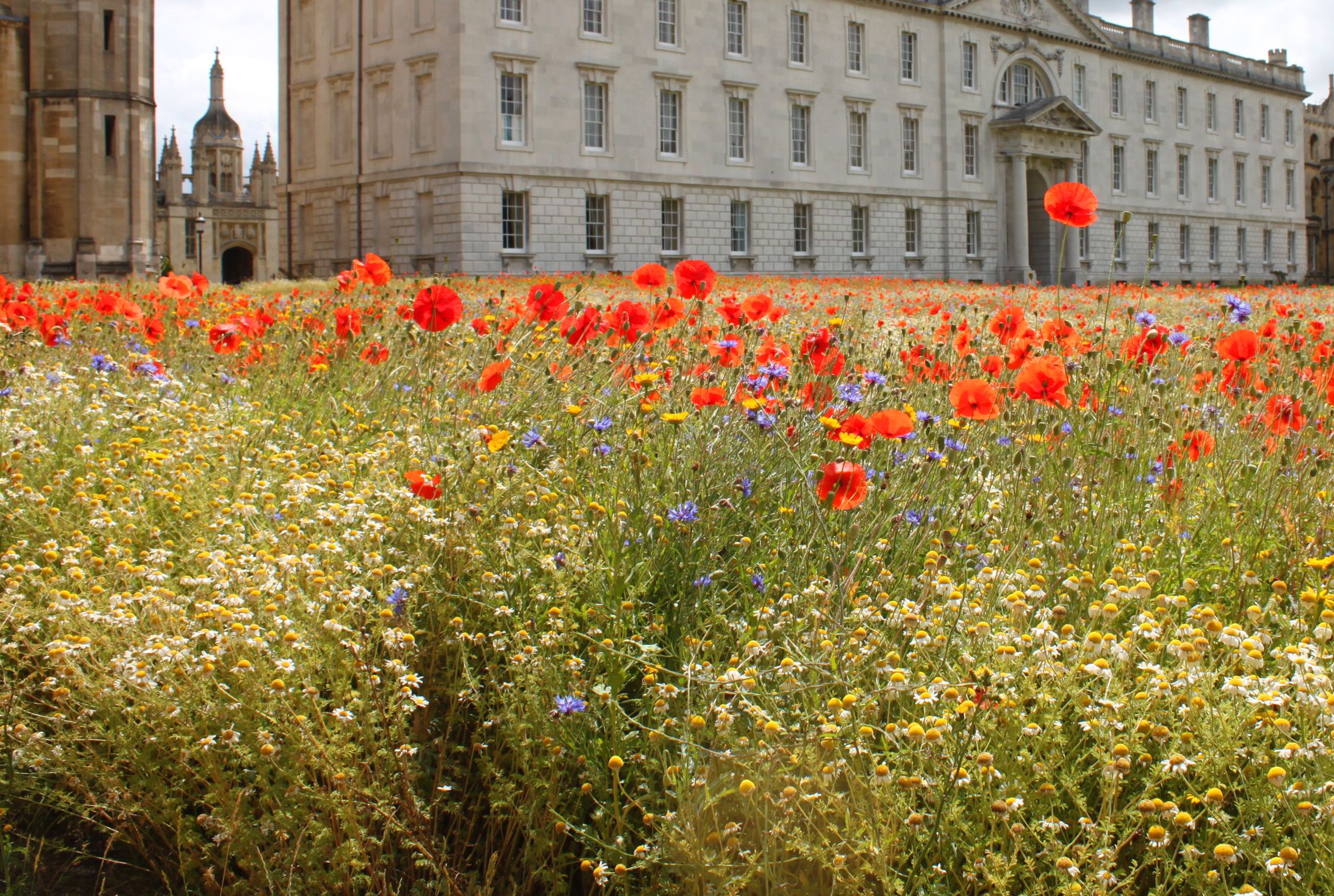
It's No-Mow May - the month we’re encouraged to let lawns and verges grow, wildflowers bloom, and insects feed. Opinions are divided, and understandably so: letting lawns go wild breaks with a 300 year-old tradition. But the gardeners of an iconic setting are on a reduced mowing regime for the fourth year running, as a new study reveals the striking benefits.
In 2020, for the first time since being laid in 1772, a section of a King’s College lawn the size of just half a football pitch was not mown.
Instead, it was transformed into a colourful wildflower meadow filled with poppies, cornflowers and oxeye daisies.
The following year other plants emerged: the area was morphing into a traditional East Anglian hay meadow.
Dr Cicely Marshall, a researcher at King’s College and the University of Cambridge’s Department of Plant Sciences, led a study to monitor the effects.
She found that as well as being a glorious sight, the meadow had boosted biodiversity and was more resilient than lawn to our changing climate. The results are published today in the journal Ecological Solutions and Evidence.
Despite its size, the wildflower meadow supported three times more species of plants, spiders and bugs than the remaining lawn - including 14 species with conservation designations, compared with six in the lawn.
“We found that the meadow was strikingly beneficial for biodiversity. I was really surprised, actually, at the magnitude of the change for such a small area.”
Cicely Marshall
84 plant species were counted during the sampling – but only 33 of these had been sown, with the rest appearing naturally. Also recorded were 16 bug and spider species, 149 nematode (roundworm) genera, and 8 species of bat.
“We found that bats are foraging three times more often over the meadow than over the lawn. For species that might look for insects over several miles in a single evening, it’s incredible that our small meadow impacted their behaviour,” says Marshall.
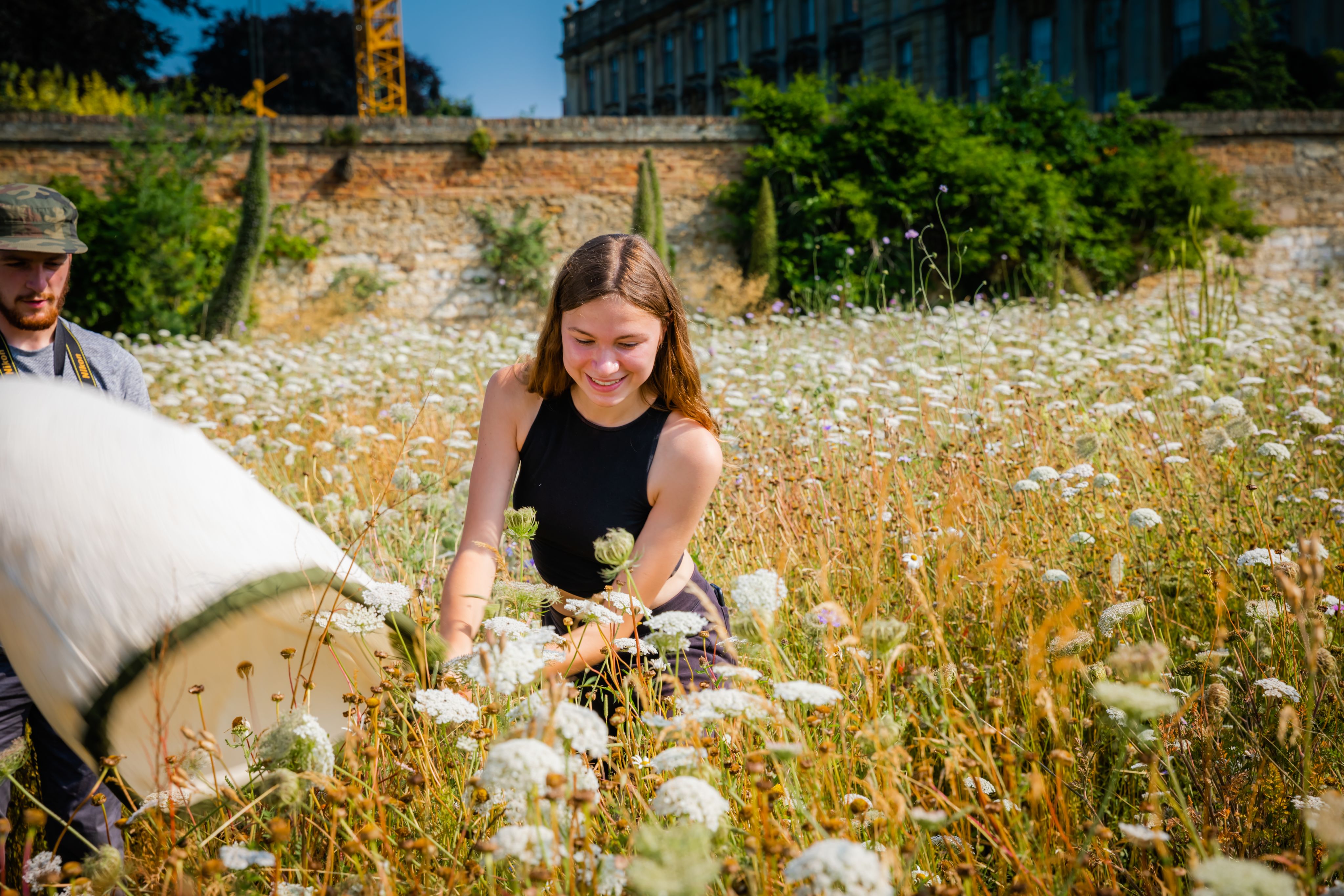
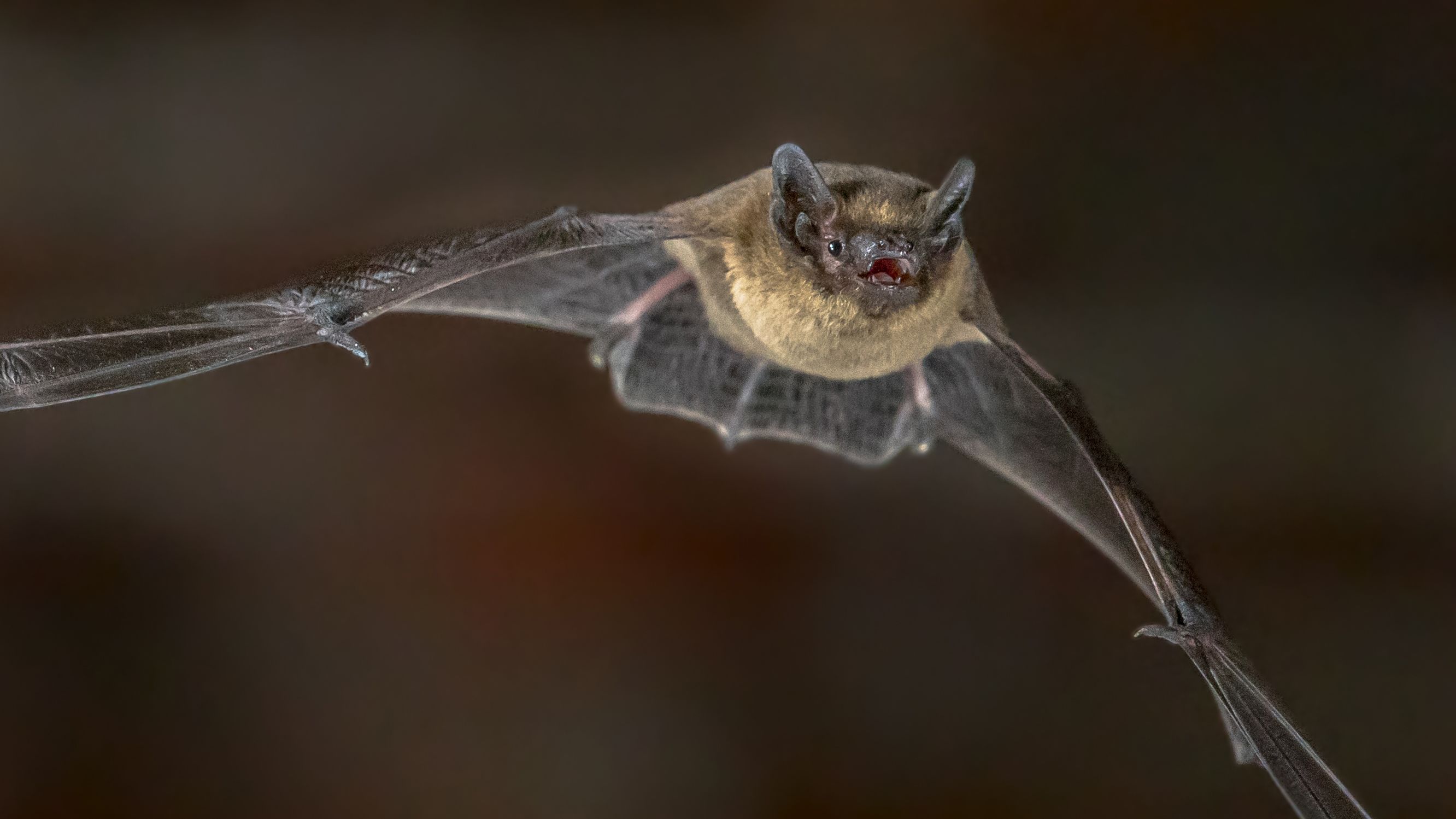
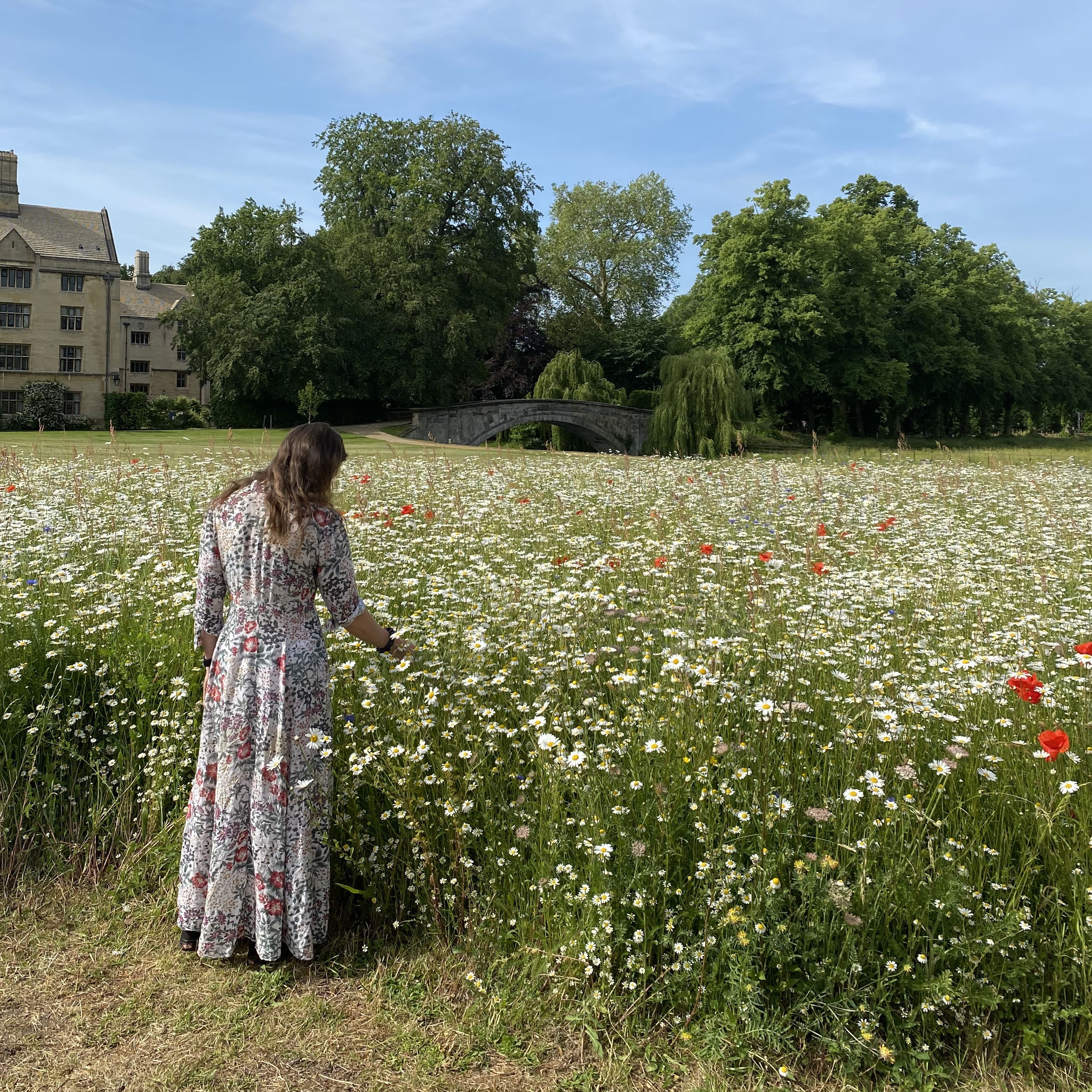
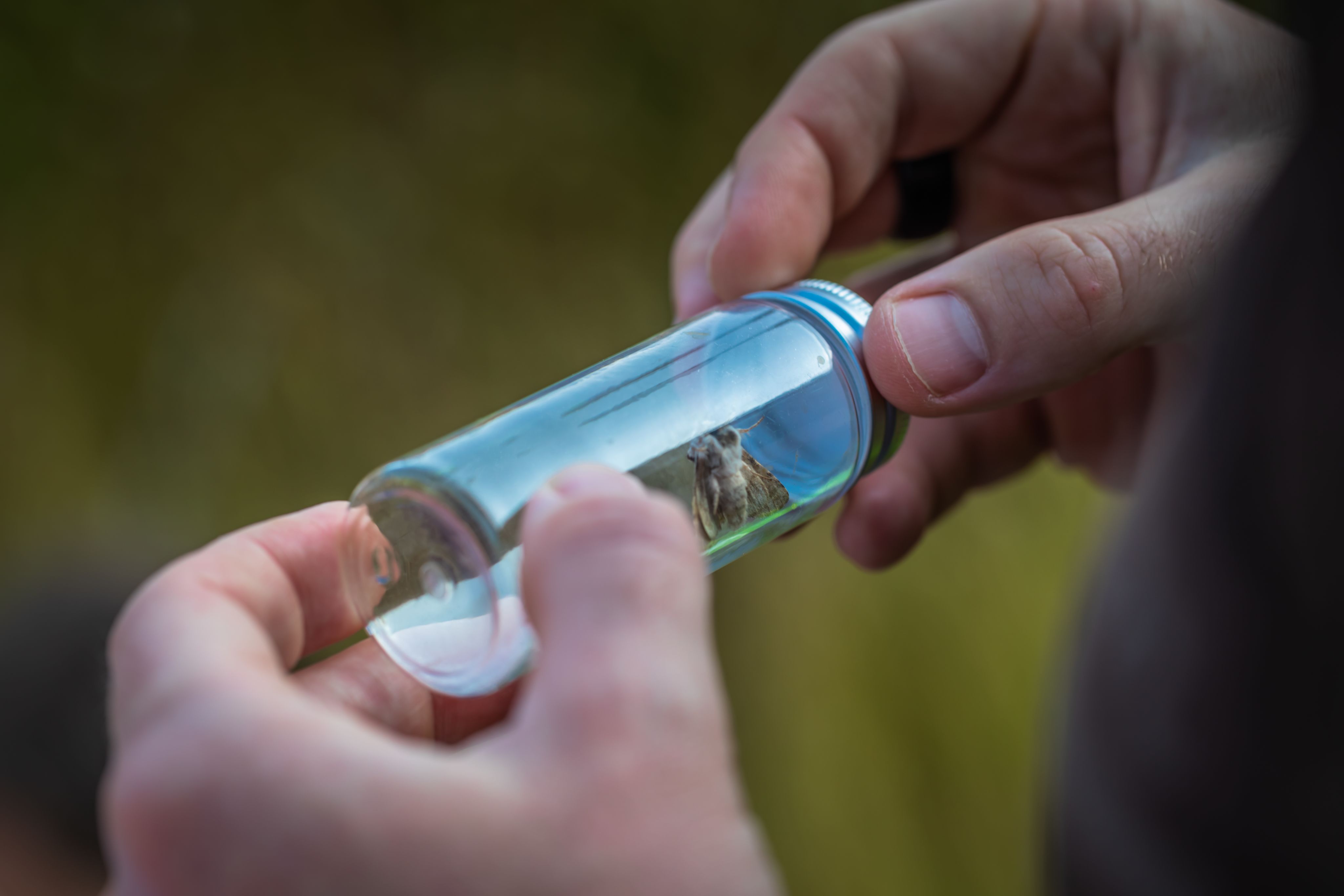

Undergraduate student surveying meadow biodiversity. Image credit: Lloyd Mann
Undergraduate student surveying meadow biodiversity. Image credit: Lloyd Mann

Flying Pipistrelle bat, Credit: CreativeNature_nl/iStock
Flying Pipistrelle bat, Credit: CreativeNature_nl/iStock

King's wildflower meadow in 2021. Image credit: Alice Bailey
King's wildflower meadow in 2021. Image credit: Alice Bailey

Moth identification. Image credit: Lloyd Mann
Moth identification. Image credit: Lloyd Mann
The team modelled the impact of the meadow on climate change mitigation. The reduced mowing and fertilisation associated with the meadow was found to save an estimated 1.36 tonnes of carbon emissions per hectare per year when compared with lawn - less than the emissions from one return flight between London and New York. But this could rise: the number of cuts required per year to maintain a lawn is expected to increase as climate change makes growing seasons longer.
The meadow was found to have another climate benefit: it reflected 25% more sunlight than the lawn, helping to counteract what’s known as the ‘urban heat island’ effect. Cities tend to heat up more than rural areas, so reflecting more sunlight can have a cooling effect - useful in our increasingly hot summers.
“Cambridge has become more prone to drought, and last summer most of the College’s fine lawns died. It’s really expensive to maintain these lawns, which have to be re-sown if they die off. But the meadow just looked after itself,” says Marshall.
She adds: “Wildflowers tend to have deeper roots than grass, so are less likely to die during prolonged dry spells.”
The team also surveyed attitudes towards the meadow, and towards increased meadow planting across the Cambridge University estate. The 278 respondents were overwhelmingly in favour of more meadows, noting benefits to mental wellbeing and the environment, and educational value – but also pointed out the continued need for lawns for recreation.
Steve Coghill, Head Gardener at King’s, is delighted by the results.
He and King’s College Fellow Professor Geoff Moggridge had their proposal for the meadow approved by College committees in 2018 for a five-year trial period; now he’s confident the meadow is here to stay.
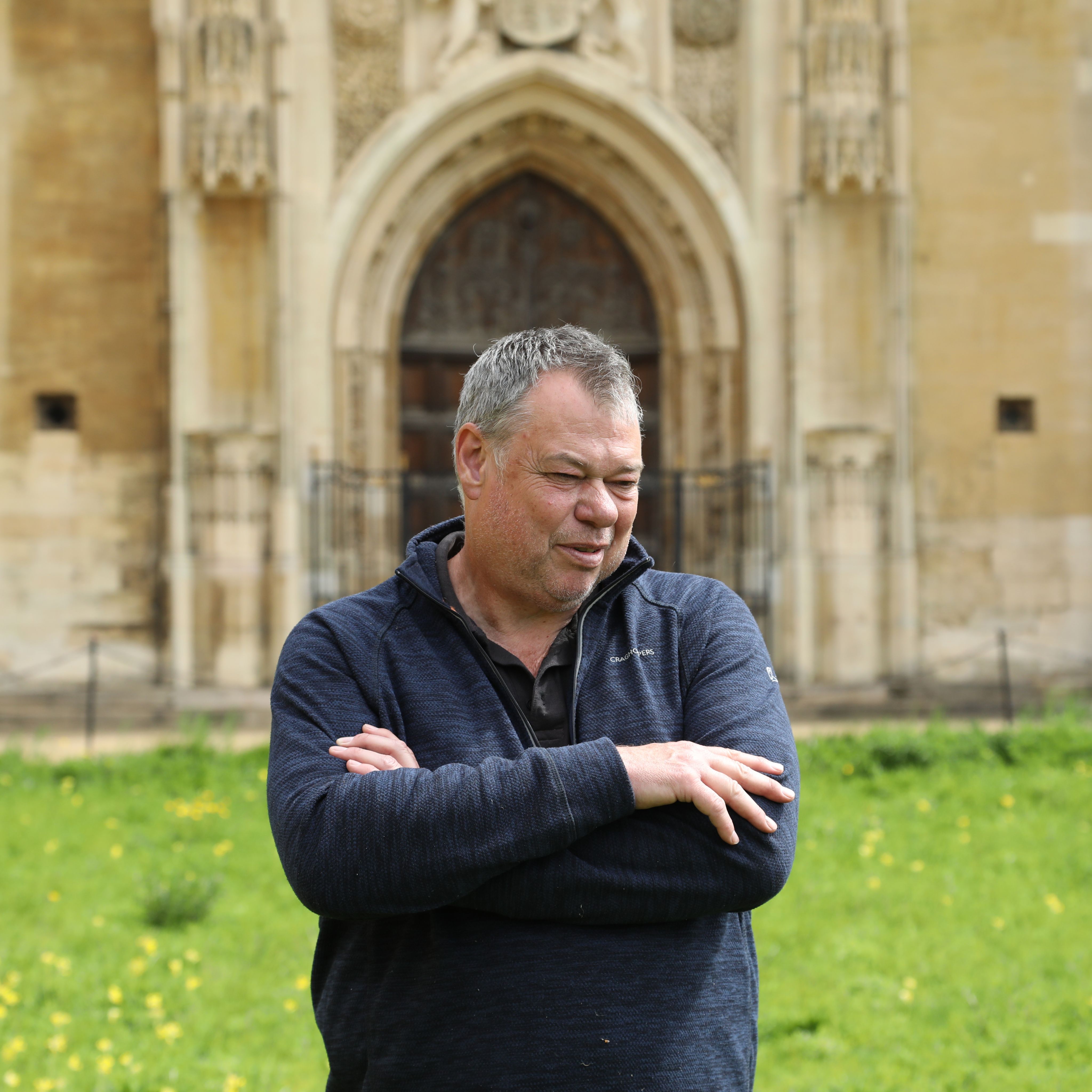
King's Head Gardener, Steve Coghill. Image credit: Jacqueline Garget
King's Head Gardener, Steve Coghill. Image credit: Jacqueline Garget
“The meadow is starting to mature – you can see the cowslips now, and by June-July it’s going to be absolutely beautiful,” he says.
“We’ll cut paths through it again this year for visitors to walk through, to have the joy of being surrounded by what is essentially an East Anglian hay meadow in the centre of Cambridge.”
Is this enough to make others want to transform their lawns?
“Many people mow their lawns because that’s what they’ve always done. There’s a perception that a close-mown lawn demonstrates you’re caring for the garden more.”
Steve Coghill
“And sometimes it’s the historically appropriate thing to do,” adds Coghill. “At King’s we also have closely mown lawns because they’re in keeping with the historical period reflected by our buildings.”
Coghill acknowledges that the King’s meadow has been controversial in certain quarters. “But we’re not frightened to be contrary at King’s, and for all the right reasons,” he says. “Britain is one of the most deforested countries in Europe. Anything we can do to bring back some biodiversity is worth a go.”

Dr Claudia Schneider, a researcher in the University’s Department of Psychology, says that having information is not always enough to motivate people to change their behaviour – but it’s an important first step.
She has just published a paper in the journal One Earth outlining how social norms can be powerful in motivating collective action on climate change.
“People are very influenced by what others around them do, and what the accepted behaviour is,” she says, “so if neighbours or friends all have lawns, that can be a barrier to creating a wildflower meadow. Humans have a strong need to belong and feel accepted.”
Lawns are a social norm – they have been the dominant form of urban grassland since the early 20th century. A European invention, they arose in the 1770s as a demonstration of wealth and status by landowners who could afford to keep the land out of productivity, and pay labourers to regularly scythe and weed. Lawns are easy to establish and - now that lawnmowers have been invented - to maintain, and have many recreational uses and aesthetic benefits.
“Research shows that people can be averse to change and the uncertainty that comes with it, unless there’s a strong motivation to do something differently.”
Claudia Schneider
She adds: “People who take the first step can help others to see the benefits. Well-respected, prominent institutions like King’s College can act as role models that may influence public opinion.”
The meadow at King’s is harvested each August with the help of Shire horses: a romantic sight that was widely shared by the media last year. The resulting bales, full of wildflower seed, were given to the gardeners of other Cambridge Colleges to start their own meadows.
“King’s is like the ‘mother meadow,’” smiles Coghill, “these bales don’t cost anything – it’s the gift that keeps on giving.”
Schneider’s research has found that a positive approach, focused on solutions, can be much more effective in motivating change than the standard ‘doom and gloom’ messages about the state of our planet. There’s no greater proof that Coghill’s enthusiastic approach is working than the growing number of mini-meadows across the University’s estate.
“There will always be people who prefer the aesthetic of lawn,” says Marshall, “and lawns definitely have a place - they’re hard wearing and good for recreation - you’re not going to play football on a meadow!"
"The UK’s urban lawns represent a big opportunity for biodiversity conservation and wellbeing, so I think it’s about finding a balance.”
Cicely Marshall
She adds: “King’s Back Lawn was first planted in 1770 when lawns were fashionable, and it reflected the way the College wanted to represent itself. But things have moved on, and we have a different set of priorities. We hope that people will see what we’ve done and think ‘why not do it too?’”
How do you start a meadow?
“In every piece of land, the soil has a memory. That memory is stored in plant seeds and can express itself in years to come, if there’s a change in the way the land is managed,” says Coghill.
“There are different ways you can grow a wildflower meadow - the easiest is to stop mowing and see what’s already there.”
Steve Coghill
Wildflowers thrive best in low nutrient soils. Most garden lawns are quite nutrient-rich because they’ve been traditionally maintained with fertilisers, making it hard for many species of wildflower to establish. Removing the topsoil – down to around 30cm – should reveal a less fertile subsoil, although this can be worth checking: at King’s the opposite was true.
“Since King’s Back Lawn is such a large and much-visited area, we did our research first by having soil samples analysed to find out the nutrient status of the ground,” says Coghill. “We were surprised to find the subsoil was unusually fertile – until we realised the area had previously been a bustling part of the city with wharves, inns, mayhem and filth!”
The best time to start a new meadow in East Anglia is autumn, when the soil still has warmth and the weather will keep it moist for a long time. And many seeds need to ‘vernalise’ - to be chilled over winter - before they’ll germinate. With that in mind, here are:
Steve Coghill’s top tips for growing your own meadow
- With the arrival of No-Mow May, stop mowing the grass. See what grows and flowers – find out what your starting point is.
- If you want to show you’re doing it deliberately and not neglectfully, mow paths or a strip around the edge. Edges provide important habitat for wildlife too.
- If you don’t want to disturb your lawn, buy wildflower plugs to plant amongst the grass.
- For a more involved approach, you could buy and sow a wildflower seed mix: Steve recommends companies like Emorsgate, which sells a range of mixes to suit different soil fertilities and provides advice on preparing your ground.
- Pick species local to your area – the more local, the more easily they’ll establish.
- There is still time to start your meadow this year. Keep it watered from your garden butt if the weather’s dry.
- Don’t give up! It can take a year, or more, for some wildflowers to bloom.
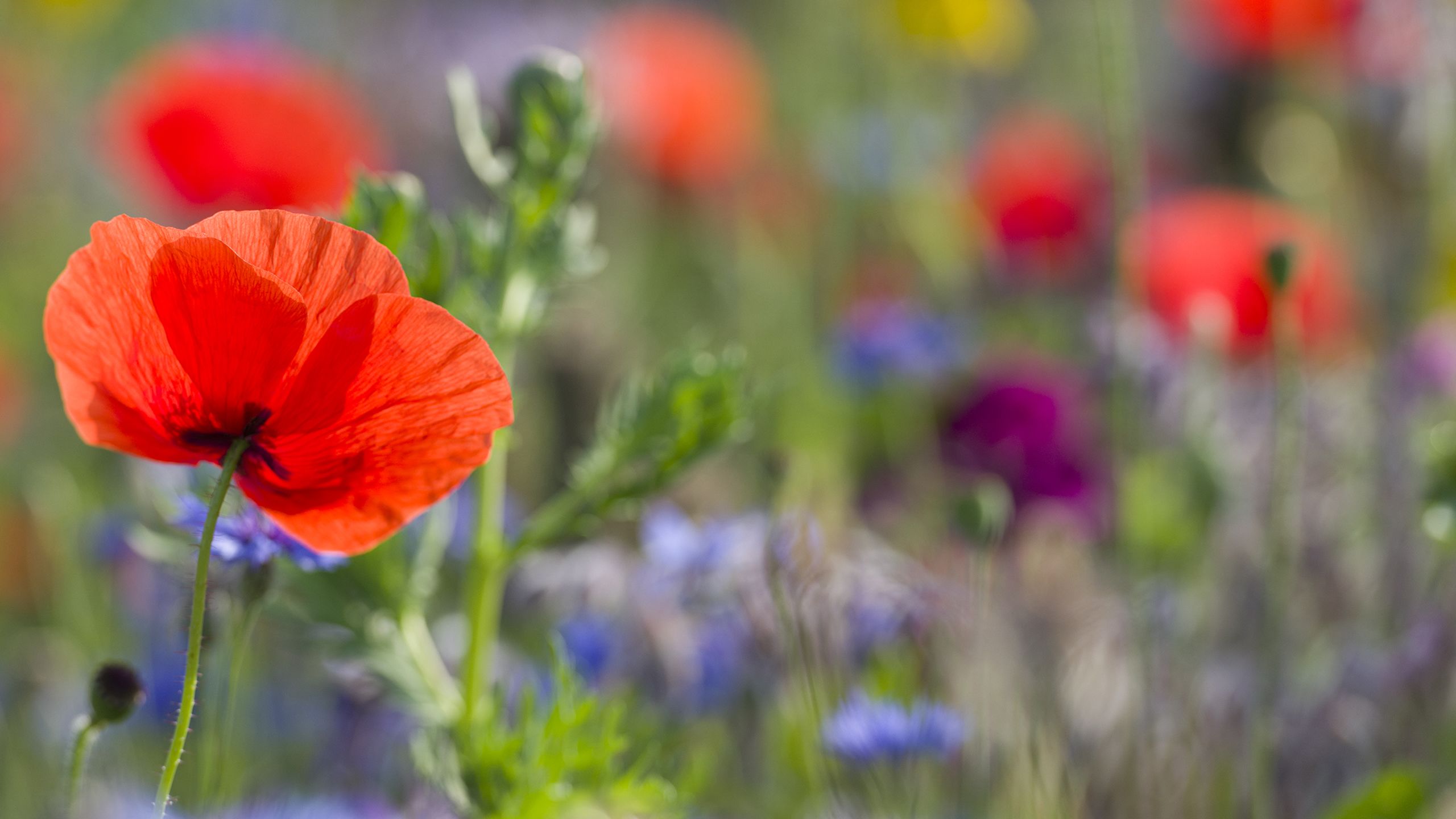
References
Marshall, C. A. M. et al., Urban wildflower meadow planting for biodiversity, climate and society: an evaluation at King’s College, Cambridge, Ecological Solutions and Evidence, May 2023. DOI: 10.1002/2688-8319.12243
Schneider, C.R. & van der Linden, S., Social norms as a powerful lever for motivating pro-climate actions, One Earth, April 2023. DOI: https://doi.org/10.1016/j.oneear.2023.03.014
Published 24 May 2023
The text in this work is licensed under a Creative Commons Attribution-NonCommercial-ShareAlike 4.0 International License
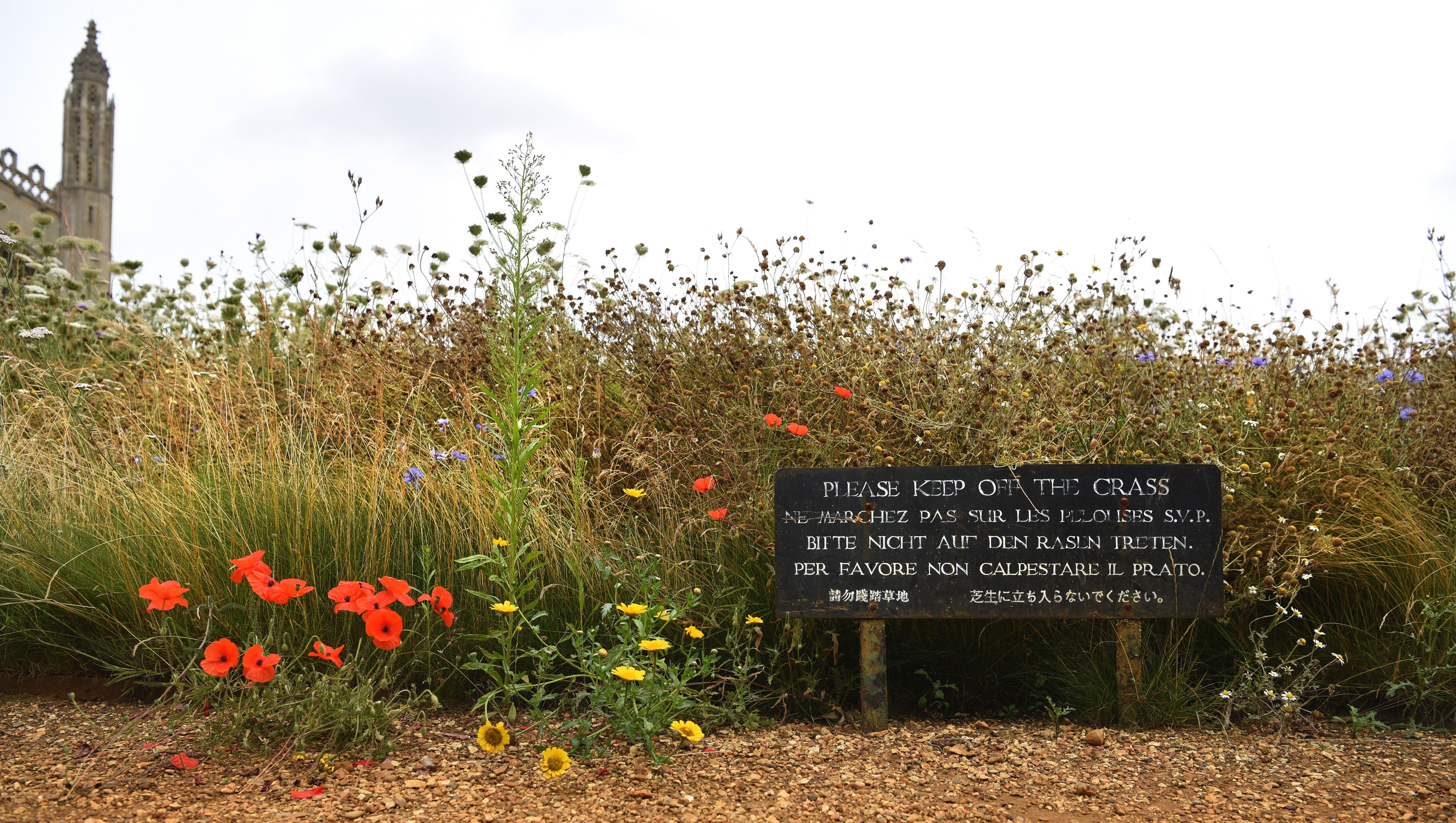
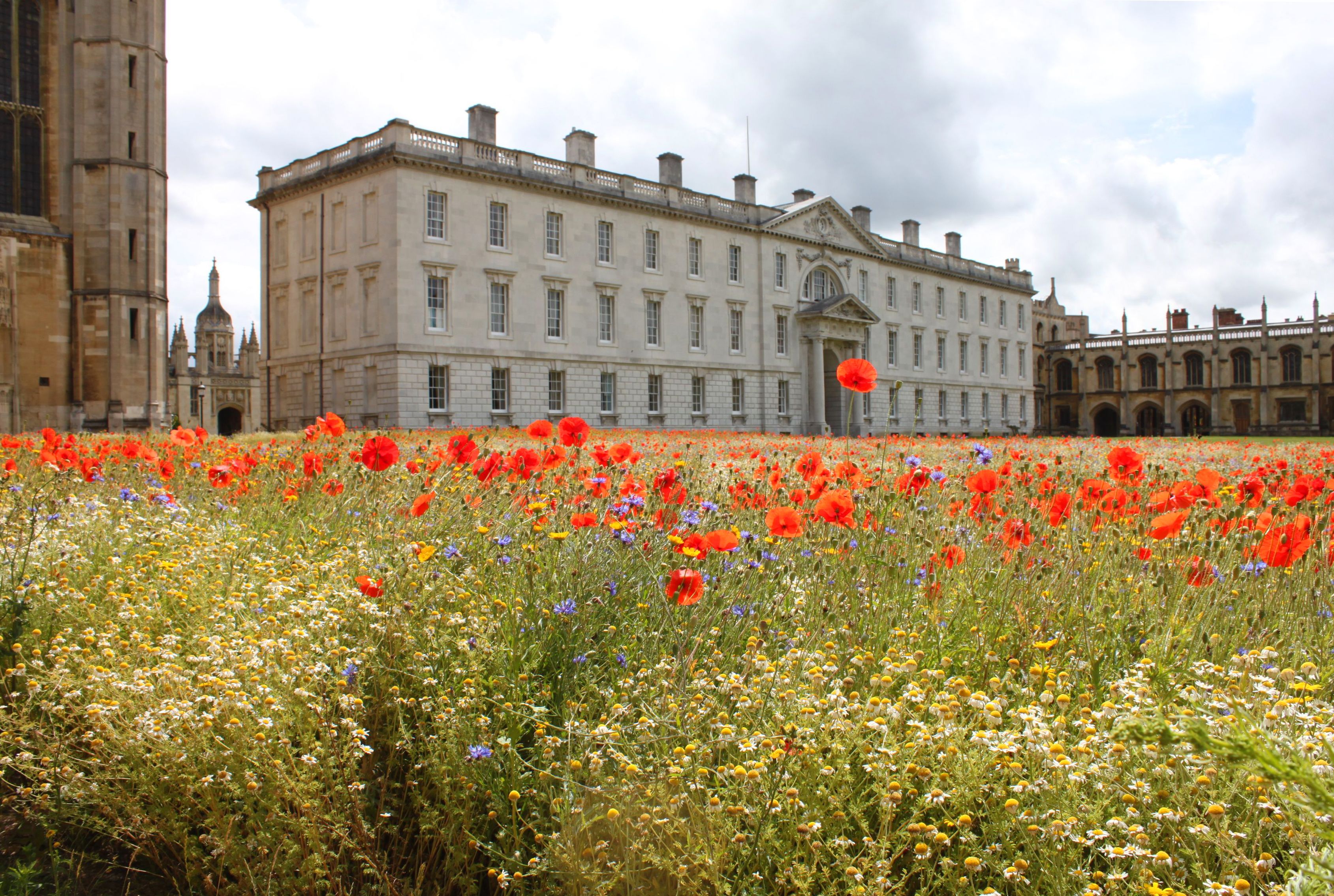
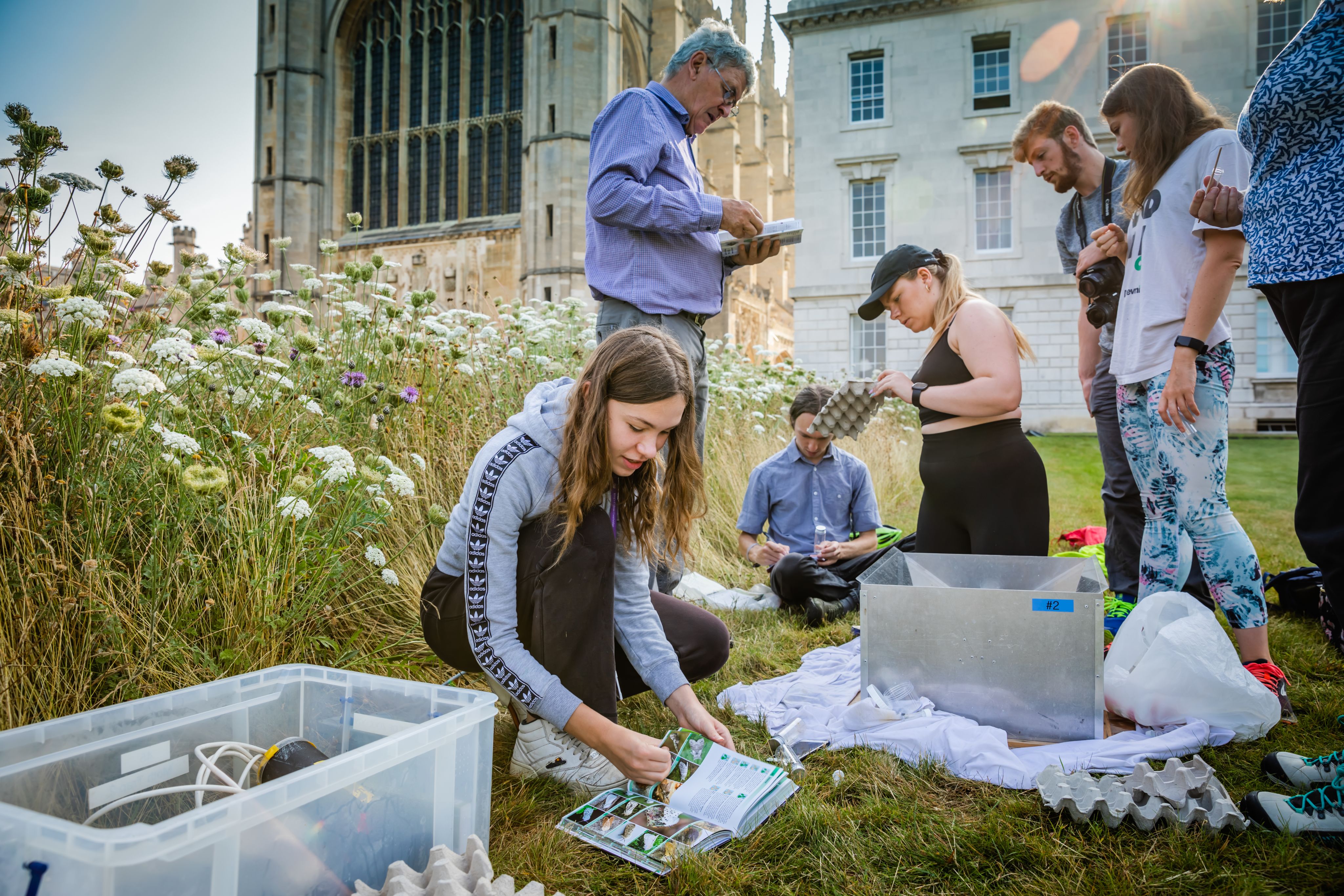
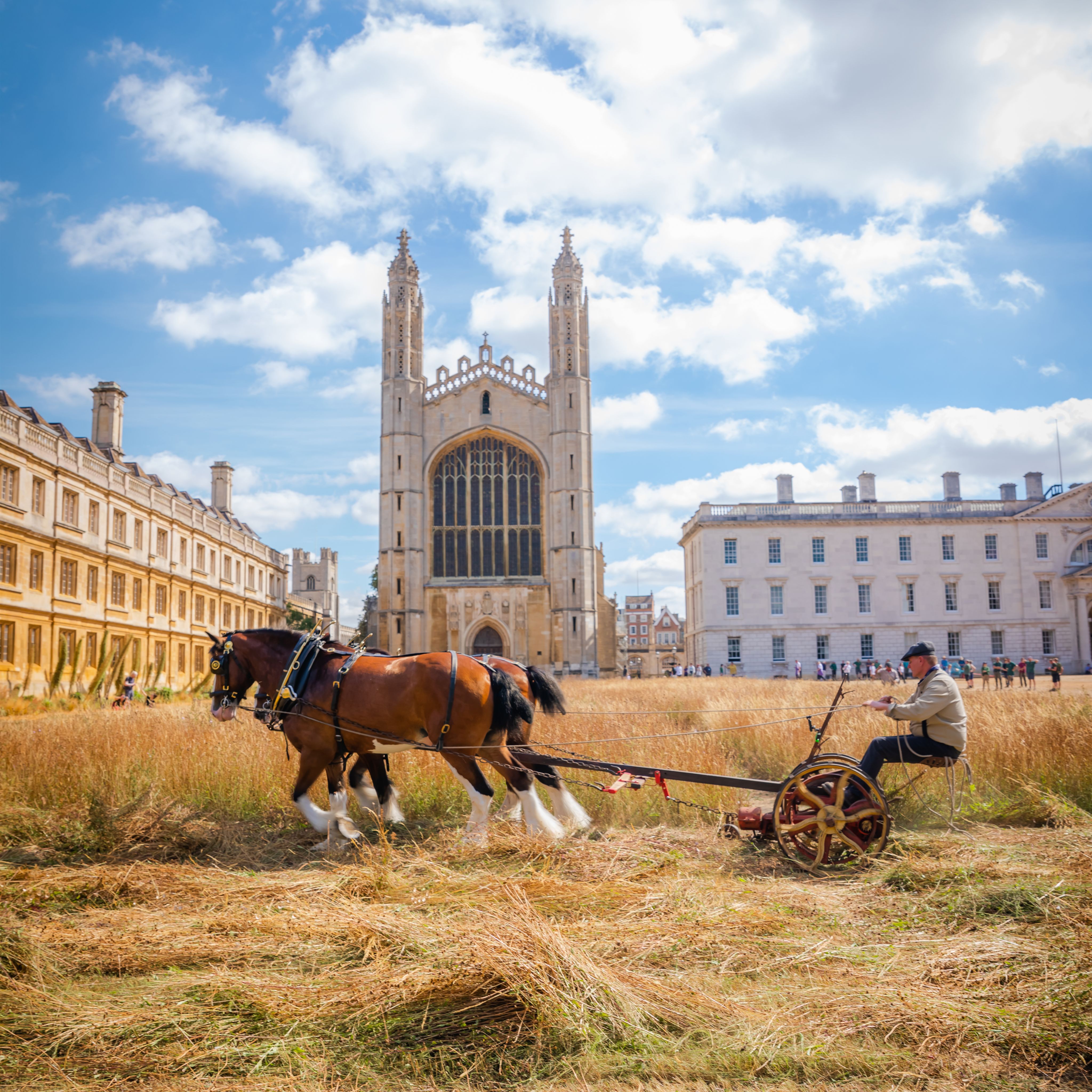

Image credit: Stephen Bond
Image credit: Stephen Bond

Image credit: Geoff Moggridge
Image credit: Geoff Moggridge

Group of students conduct meadow survey. Image credit: Lloyd Mann
Group of students conduct meadow survey. Image credit: Lloyd Mann

Heavy horses harvest King's meadow. Image credit: Lloyd Mann
Heavy horses harvest King's meadow. Image credit: Lloyd Mann